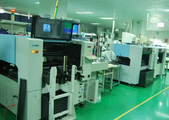Are LED Strip Light Factories Eco-Friendly?
Energy Efficiency of LED Technology
LED strip lights are celebrated for their exceptional energy efficiency. Compared to traditional incandescent bulbs, LED lights consume up to 80% less energy and have a lifespan that can exceed 50,000 hours. This significant reduction in energy usage translates into a lower carbon footprint for both the factories that produce them and the consumers who use them. By leveraging LED technology, LED Strip Light factories are actively contributing to global efforts to reduce energy consumption and mitigate the effects of climate change.
Sustainable Manufacturing Practices
Many LED strip light factories are adopting sustainable manufacturing practices to minimize their environmental impact. This includes using solar panels to power production lines, recycling waste materials, and implementing strict guidelines to reduce emissions of volatile organic compounds (VOCs). For instance, some top-tier factories have reported a reduction of their energy usage by 40% through such initiatives. Additionally, water recycling systems are often employed to conserve water—a critical resource in manufacturing.
Use of Eco-Friendly Materials
In the pursuit of eco-friendliness, these factories also prioritize the use of non-toxic materials. LED strip lights are generally free of hazardous substances like mercury and lead, which are commonly found in fluorescent and incandescent light sources. Moreover, the adoption of silicone instead of PVC for strip coatings has become more prevalent due to silicone’s non-toxic and recyclable properties. This shift not only improves the environmental profile of the products but also enhances their durability and performance.

Reducing Packaging Waste
Packaging is another area where LED strip light manufacturers are making strides in eco-friendliness. Many are moving away from traditional plastic and styrofoam packaging, opting instead for materials that are biodegradable or easier to recycle. Some companies have even reduced packaging size and weight, which not only cuts down on waste but also reduces shipping emissions.
Lifecycle and Recyclability
The long lifespan of LED strip lights inherently reduces the frequency of replacement, which diminishes the volume of waste entering landfills. Additionally, the design of these lights often allows for individual components, such as the LED diodes and the circuit board, to be recycled at the end of their useful life. Efforts are ongoing within the industry to enhance the recyclability of LED strips by simplifying the disassembly process and using more recyclable materials in their construction.
Corporate Responsibility and Certifications
Leading LED Strip Light factories are not only adopting green practices internally but are also obtaining certifications like ISO 14001 for environmental management systems. These certifications are not merely for show—they require rigorous audits and continuous improvement in environmental performance, ensuring that factories maintain high standards of eco-friendliness.
Conclusion
With these efforts, LED strip light factories are proving that industrial production can be environmentally responsible. Through innovative manufacturing techniques, sustainable material usage, and energy-efficient products, these factories are setting a standard for eco-friendliness in the lighting industry. Their commitment to sustainability not only benefits the environment but also aligns with the growing consumer demand for green products.





